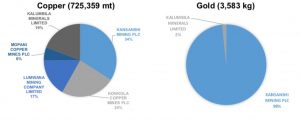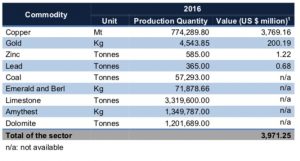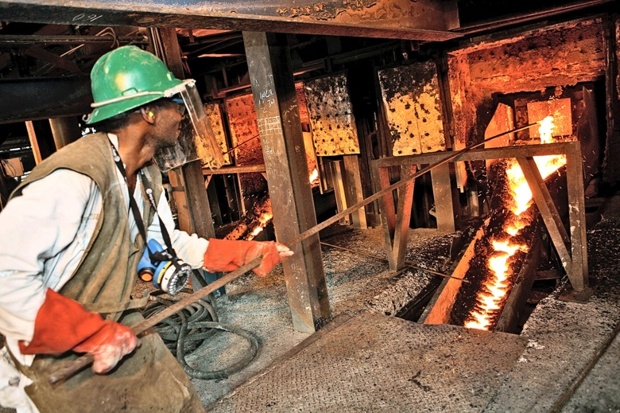- Key contributors to government revenues where FQMs Kansanshi, Kalumbila followed by Vedanta’s Konkola Copper Mine.
- Mineral royalty taxes accounted for (29%), import value added tax 21%, pay as you earn 16% and corporation tax 3%.
The recent published Extractive Industries Transparency Initiative (EITI) 9th Report on Zambia, the mining sector accounted for more than 25% of the Zambia government’s income, contributing K10.72 billion (circa.US$1 billion @K10,29/USD) in 2016. This represents a 13.31% increase from 2015 levels of USD9.46 billion.
The revenue authority in Africa’s second largest copper producer, in 2016, reported having collected K10.28 billion from the mining sector whose breakdown is as follows: K2.34 billion from Kansanshi Mining, K1.1 billion from Kalumbila Minerals and K751 million from First Quantum Mining and Operations for the year 2016. Konkola Copper Mines (KCM) was the second highest taxpayer in the industry, paying K1.24 billion, while Lumwana Mining Company paid K1.2 billion and Mopani Copper Mines Paid K1.1 billion to the Zambia Revenue Authority (ZRA).
Key contributors to this tax net were First Quantum Minerals (FQM), accounted for 41 percent of the industry’s tax payments through its local subsidiaries Kansanshi Mining, Kalumbila Minerals and First Quantum Mining and Operations. Konkola Copper Mines (KCM) was the second highest taxpayer in the industry, paying K1.24 billion to ZRA in 2016, while Lumwana Mining Company paid K1.2 billion, and Mopani Copper Mines K1.1 billion.
Extractive sector contribution to GDP
According to the MinFin’s annual economic Report for 2016, the extractive sector’s contribution to gross domestic product (GDP) at constant prices amounted to approximately K13,608.60 million or 10.5% of the country’s GDP. The same report states that the value of metal exports amounted to USD4,738.20 million and represents about 72.84% of the country’s total exports. The extractive sector’s contribution to the State’s revenue amounted to K10,275.63 million (26.4%) in 2016 (total revenues amounting to K38,884.61 million).
“The entire sector’s contribution to employment for 2016 was not made available to us,” the EITI report carried.
We understand that this information is available from the Labour Force Survey published by the Central Statistical Office. There are two Surveys published relating to the years 2014 and 2017. The figures stated in this report relate to 2017 survey. Mining companies employ about 58,000 persons directly, which represents 2.0% of the country’s 2017 labour force of 2,791,170.1 The charts below show the contribution of the extractive sector to GDP, exports, State revenues and employment figures for 2016.
EITI is a global coalition of governments, companies and civil society groups working together to improve transparency and accountability in the management of revenues from natural resources.
“EITI principles are based on the belief that prudent use of natural resources contributes to economic growth, sustainable development and reduction of poverty in resource-rich countries,” said the report, compiled by London-based accounting firm Moore Stephens acting as independent administrators.
When other government payments such as dividends, local council rates, social payments and environmental protection fund (EPF) contributions are included, the state received K10.72 billion in revenue from the mining sector during the year 2016.
Tax contributions
Minerals royalty taxes accounted for 29% of the total, while import value added taxation (VAT) accounted for 21%, pay as you earn (PAYE) contributed 16% as corporation tax gave 13%, and value added tax (VAT) provided a 6% contribution.
Of the K96 million paid by the sector in local council rates, Solwezi Municipal Council received K28.8 million (30%). Social payments by the industry amounted to K287 million, of which -K188 million (41%) – was contributed by FQM operations, and K151 million by Mopani Copper Mines.
Revenue generation drivers were production based through 725,359 metric tons of copper, accordingly to industry figures in the report, of which FQM’s Kansanshi and Kalumbila mines accounted for 386,394 tonnes or 53%, Vedanta Resources (KCM) reported extraction of 174,985 tons, Lumwana 174,985 tons (17%) and Glencores Corporations Mopani at 41,109 tons (5.67%).


Mining companies directly employed about 58,007 individuals.

